Related Research Articles
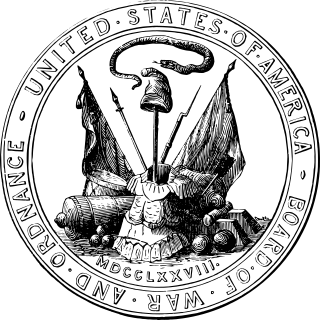
The Continental Army was the army of the United Colonies representing the Thirteen Colonies and later the United States during the American Revolutionary War. It was formed on June 14, 1775, by a resolution passed by the Second Continental Congress, meeting in Philadelphia after the war's outbreak. The Continental Army was created to coordinate military efforts of the colonies in the war against the British, who sought to maintain control over the American colonies. General George Washington was appointed commander-in-chief of the Continental Army and maintained this position throughout the war.

The United States Department of War, also called the War Department, was the United States Cabinet department originally responsible for the operation and maintenance of the United States Army, also bearing responsibility for naval affairs until the establishment of the Navy Department in 1798, and for most land-based air forces until the creation of the Department of the Air Force on September 18, 1947.
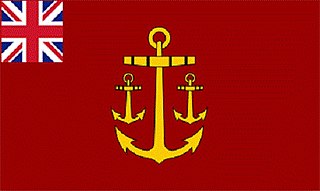
The Navy Board was the commission responsible for the day-to-day civil administration of the Royal Navy between 1546 and 1832. The board was headquartered within the Navy Office.
A commissariat is a department or organization commanded by a commissary or by a corps of commissaries.
A commissary is a government official charged with oversight or an ecclesiastical official who exercises in special circumstances the jurisdiction of a bishop.

The Royal Army Service Corps (RASC) was a corps of the British Army responsible for land, coastal and lake transport, air despatch, barracks administration, the Army Fire Service, staffing headquarters' units, supply of food, water, fuel and domestic materials such as clothing, furniture and stationery and the supply of technical and military equipment. In 1965 its functions were divided between other Corps and the RASC ceased to exist; subsequently, in 1993, they in their turn became the "Forming Corps" of the Royal Logistic Corps.
The Board of Navy Commissioners was a United States Navy administrative body in existence from 1815 to 1842, with responsibility for the navy's material support. The three-member Board was created as part of an expansion of the U.S. Navy Department at the end of the War of 1812. The system was implemented by Benjamin W. Crowninshield, Secretary of the Navy during the administrations of Presidents James Madison and James Monroe.

The United States Army Quartermaster Corps, formerly the Quartermaster Department, is a sustainment and former combat service support (CSS) branch of the United States Army. It is also one of three U.S. Army logistics branches, the others being the Transportation Corps and the Ordnance Corps.
Apothecary General was a British and American military post held during the times of the American Revolution. The appointment of Apothecary General in the British Army dated from 1686; it lapsed in 1826, by which time it was little more than an honorary title.
The Bureau of Supplies and Accounts (BuSandA) was the United States Navy's supply organization between 1892 and 1966. Established in 1842 as the Bureau of Provisions and Clothing, the bureau was responsible for the procurement, receipt, storage, shipment, and issuance of food, fuel, clothing, general stores, and other materials. BuSandA also maintained and operated naval supply depots and similar units, and supervised activities of the Navy's Supply Corps officers. Duties also included the procurement, allocation, and disbursement of funds, and the holding of money and property accounts.
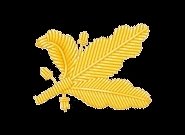
The Navy Supply Corps is the United States Navy staff corps concerned with supply, logistics, combat support, readiness, contracting, and fiscal matters.
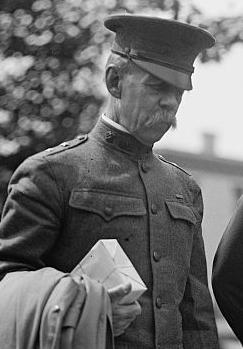
Major General Henry Granville Sharpe was a United States Army officer who served as the 24th Quartermaster General of the U.S. Army from 1916 to 1918, including during World War I.

The Quartermaster General of the United States Army is a general officer who is responsible for the Quartermaster Corps, the Quartermaster branch of the U.S. Army. The Quartermaster General does not command Quartermaster units, but is primarily focused on training, doctrine and professional development of Quartermaster soldiers. The Quartermaster General also serves as the Commanding General, U.S. Army Quartermaster Center and School, Fort Gregg-Adams, Virginia and the traditional Quartermaster Corps.

The Transport Board was a British government organisation responsible periodically for the overseas transport of troops and horses, arms and ammunition, naval and military supplies, provisions and other items. It is also referred to as the Board of Transport and the Transport Office.
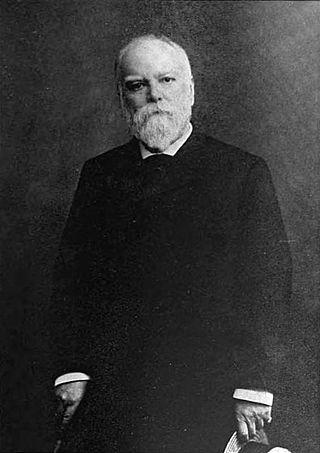
Beekman Du Barry, Sr. was a brigadier general in the United States Army. He briefly participated in the Northern Pacific Railroad Survey of 1853 to 1854, and served with distinction in the Commissary of Subsistence of the Union Army during the American Civil War.
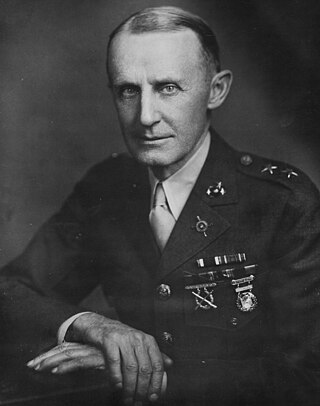
Seth Williams was an officer of the United States Marine Corps with the rank of major general, who served at Headquarters Marine Corps as Quartermaster General of the United States Marine Corps during the years 1937–1944.

The Chief of Ordnance of the United States Army is a general officer who is responsible for the Army Ordnance Corps and serves as the Commandant of the U.S. Army Ordnance School at Fort Lee, Virginia. The Chief of Ordnance is primarily focused on the doctrine, training, and professional development of Ordnance officers and soldiers. The position was created simultaneously with the establishment of the Army Ordnance Department on May 14, 1812.

The Swedish Army Quartermaster Corps was an administrative corps for personnel within the Swedish Army created in 1880. From the corps, the Swedish Army was provided with staff for various commissary positions. The head of the corps was the Quartermaster-General of the Swedish Army. In 1966, the corps was amalgamated with the Swedish Naval Supply Service (Marinintendenturkåren) and the Swedish Air Force's quartermaster officers and formed the Quartermaster Corps of the Swedish Armed Forces. It was in turn amalgamated with the Swedish Army Ordnance Corps in 1973 and formed the Commissary Corps of the Swedish Armed Forces which was disbanded in 1990.
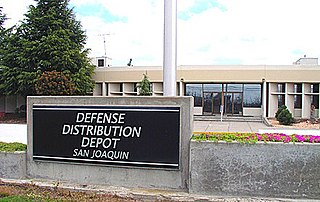
San Joaquin Depot is site of military storage bases. The facilities of San Joaquin Depot: are the Tracy Facility, the Sharpe Facility and former Stockton's Rough & Ready Island depot. The depots are in San Joaquin County, California near Stockton, California. These depots purchased, stored and shipped supplies needed for the World War II efforts in the Pacific War and some supplies to the Western Front. The depots were in an ideal location, at a safe inland port served by the San Joaquin River, which has railroad lines, a network of roads to California bases and nearby airports, including the Stockton Army Airfield. The depots were run the War Department's Defense Logistics Agency. The Defense Logistics Agency ran 22 large depots during World War 2.
The United States Government Fur Trade Factory System was a system of government non-profit trading with Native Americans that existed between 1795 and 1822.
References
Citations
- 1 2 Mack 1943, p. 11.
- ↑ Risch 1962, p. 119.
- ↑ Matchette 1995, vol. 2, p. 192-1.
- ↑ Beugoms 2018, p. 13.
- 1 2 Ward 1962, p. 144.
- ↑ Schmitt 1970, p. 54.
- ↑ Beugoms 2018, pp. 13-14.
- ↑ Short 1923, p. 142.
- ↑ Risch 1962, p. 119.
- ↑ Hill 1965, p. 15.
- ↑ Beugoms 2018, pp. 21-22.
- ↑ Grover 1948, p. 161.
- ↑ Schmitt 1970, pp. 54, 57.
Cited literature
- Beugoms, Jean-Pierre (2018). The Logistics of the United States Army, 1812-1821. Diss. Temple University.
- Grover, Wayne C. (1948). Guide to Federal Records in the National Archives of the United States. National Archives and Records Administration.
- Hill, Edward E. (1965). Preliminary inventory of the records of the Bureau of Indian Affairs. National Archives and Records Administration, Washington D.C.
- Mack, Clifton E. (1943). Federal Procurement. United States Government Printing Office. Washington.
- Matchette, Robert B. (1995). Guide to Federal Records in the National Archives of the United States. National Archives and Records Administration.
- Risch, Erna (1962). Quartermaster Support of the Army. A History of the Corps 1775-1939. Washington D.C.
- Schmitt, Frederick P. (1970). "The founding of the Supply Corps." Navy Supply Center Newsletter33(1): 54-57.
- Short, Lloyd Milton (1923). The Development of National Administrative Organization in the United States. The Johns Hopkins Press.
- Ward, Harry M. (1962). The Department of War, 1781-1795. University of Pittsburgh Press.